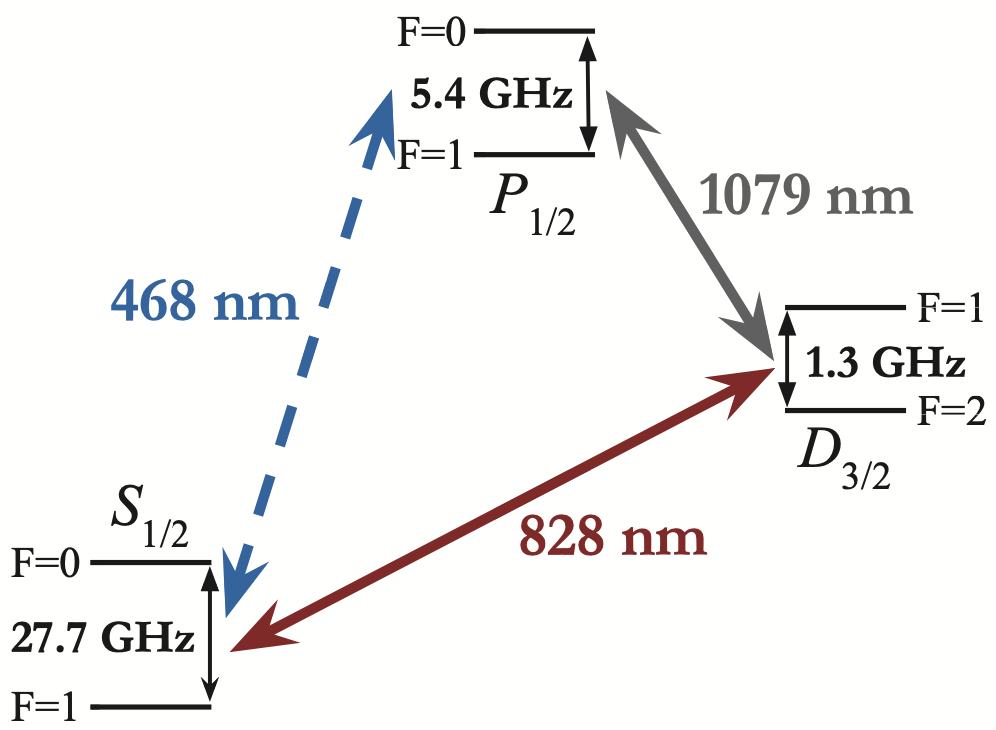Ion optical clocks with three electronic states
C. A. Holliman, M. Fan, A. M. Jayich SPIE Proc., (2023)
Optical clocks are the apotheosis of precision measurement, but they require frequent maintenance by scientists. The supporting laser systems are a particularly demanding component of these instruments. To reduce complexity and increase robustness we propose an optical clock with trapped alkali-like ions that use the S1/2 → D3/2 electric quadrupole transition. Compared to traditional group-II ion clocks this reduces the number of laser wavelengths required, and uses hyperfine state preparation and readout techniques enabled by the nuclear spin I = 1/2. We consider 225Ra+ as a candidate system for a clock with three electronic states, and discuss the potential to help realize a transportable optical clock.
